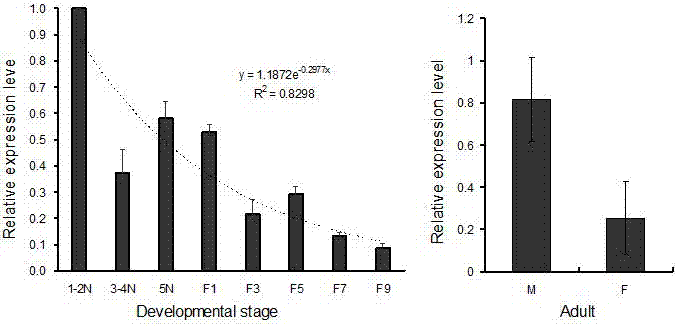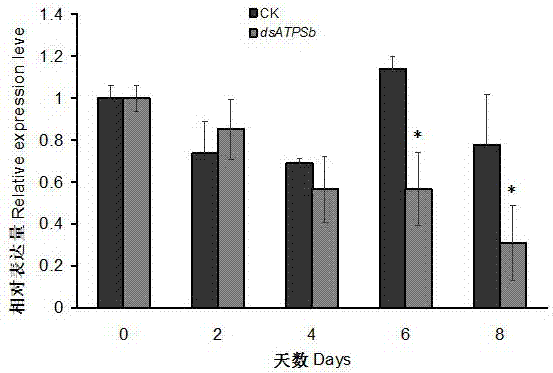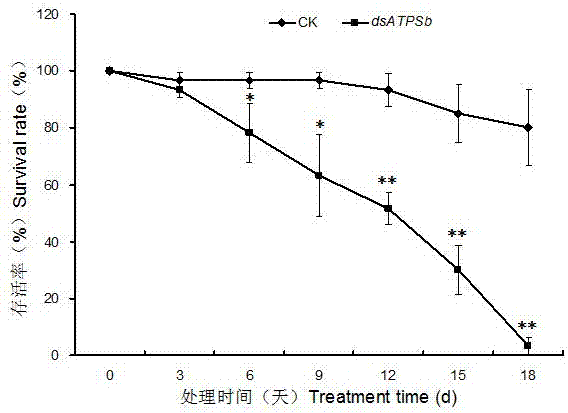ATPSb gene related to survival of brown planthopper and encoded protein as well as application thereof
A technology of gene coding and brown planthopper, applied in application, genetic engineering, plant genetic improvement, etc., can solve the problems of pest rampant environment, harmful substance residue, pollution, etc., and achieve the effects of reducing direct damage, decreasing survival rate, and avoiding damage
- Summary
- Abstract
- Description
- Claims
- Application Information
AI Technical Summary
Problems solved by technology
Method used
Image
Examples
Embodiment 1
[0018] 1 Materials and methods
[0019] 1.1 Tested brown planthopper
[0020] The tested N. lugens population is the Tn population raised on the susceptible rice variety TN1. The laboratory has continuously raised more than 50 generations on TN1. The breeding temperature is 26±2°C, the relative humidity is 80%±5%, and the photoperiod is 12L: 12D.
[0021] main reagent
[0022] TaKaRa MiniBEST Universal RNA Extraction Kit, TaKaRa MiniBEST Agarose GelDNA Extraction Kit, PrimeScript RT reagent Kit With gDNA Eraser, DNA 2000Marker, Premix Taq ™ (TaKaRa Taq ™ Version 2.0 plus dye), SYBR Premix Ex Taq were purchased from Dalian TaKaRa Company, SMARTer® RACE 5' / 3' Kit User Manual was purchased from American Clontech Company, MEGAscript® T7 High Yield Transcription Kit was purchased from American Ambion Company, sequencing and The primers were synthesized by Shanghai Sunny Biotechnology Co., Ltd.
[0023] Nilaparvata lugens ATP synthase b subunit gene ATPSb Cloning of full-le...
PUM
| Property | Measurement | Unit |
|---|---|---|
| Protein molecular weight | aaaaa | aaaaa |
Abstract
Description
Claims
Application Information
 Login to View More
Login to View More - R&D
- Intellectual Property
- Life Sciences
- Materials
- Tech Scout
- Unparalleled Data Quality
- Higher Quality Content
- 60% Fewer Hallucinations
Browse by: Latest US Patents, China's latest patents, Technical Efficacy Thesaurus, Application Domain, Technology Topic, Popular Technical Reports.
© 2025 PatSnap. All rights reserved.Legal|Privacy policy|Modern Slavery Act Transparency Statement|Sitemap|About US| Contact US: help@patsnap.com



